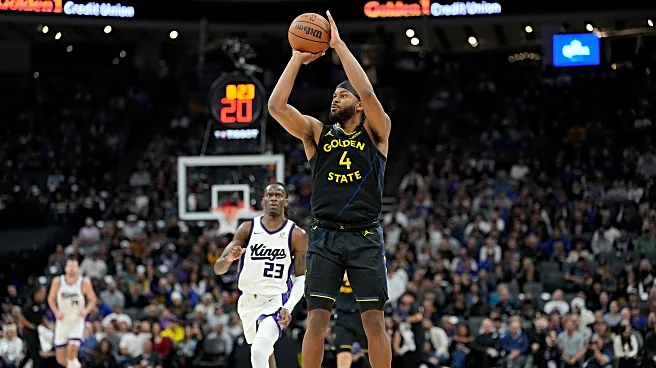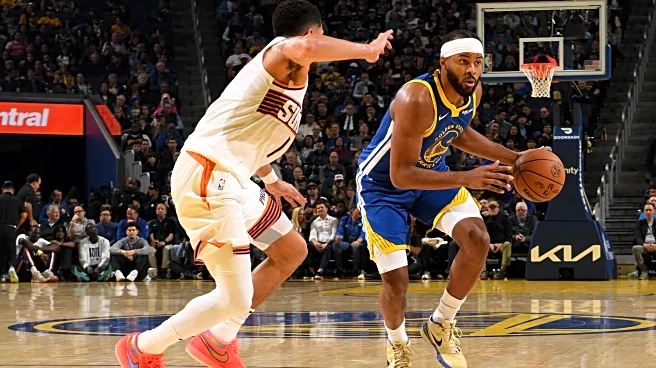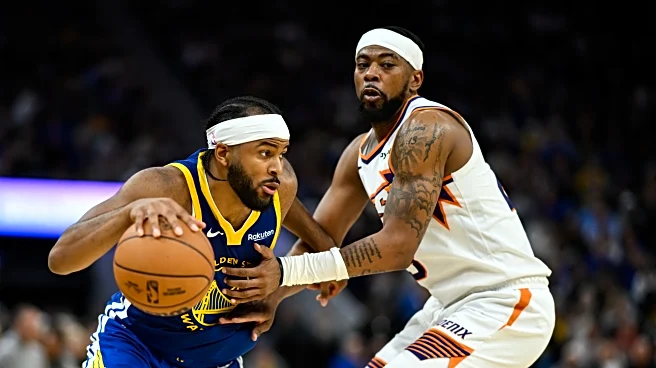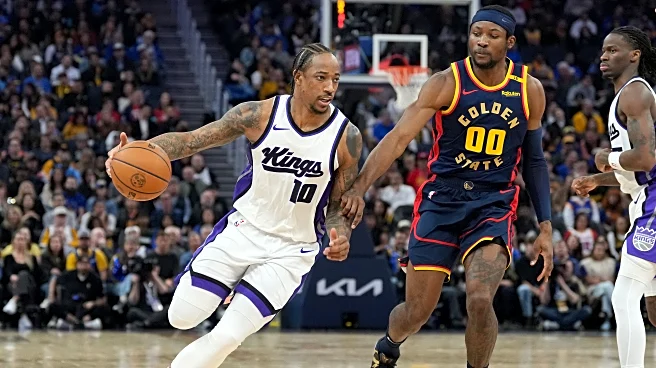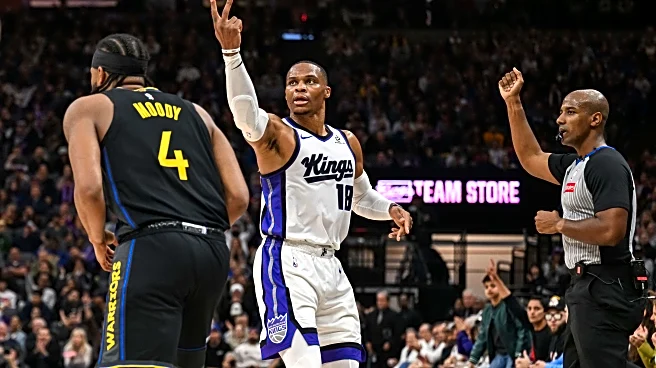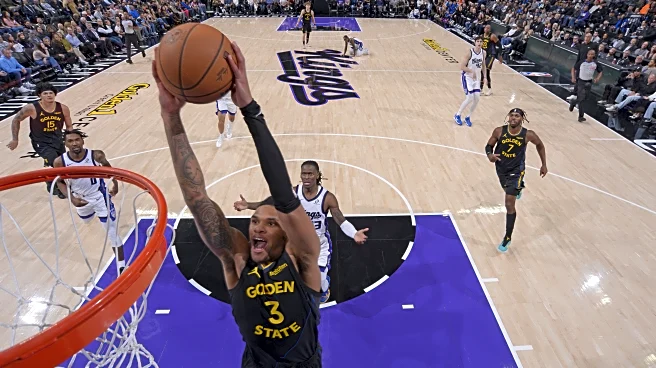Tim Legler, ESPN’s most astute basketball analyst and a former 11-year pro which included stints with six NBA teams, recently was on a segment called “Coaches’ Corner,” which featured current championship-winning
coaches in the NBA, from whom Legler sought out valuable insights pertaining to on-court tactics and strategies from each coach’s respective team. Naturally, Legler eventually had the chance to speak with Steve Kerr, one of eight coaches in the NBA that have led teams to at least one NBA Championship. It wasn’t hard to ascertain what Legler wanted to speak about with Kerr when it comes to the Golden State Warriors: arguably their signature half-court set, the vaunted low-post split action.
While the split action is often one that goes uncalled — most of the time, players naturally flow into the set as an automatic non-verbal progression, without need for much setup and window dressing — Kerr revealed that in moments where he has to call out the play, he refers to it as “5 Out,” in reference to the five-man being outside, behind the three-point line, feeding the ball into the post and setting the screen for the recipient of the split cut, wh0, more often than not, is Steph Curry. The reasoning behind the five-man being the one to feed the ball and set the screen is simple: it is often the five-man who is the best screener on the floor at any given moment, while he is often guarded by an opposing five who may be dropping back, and therefore, unable to close out and contest against the man darting around the screen for a three.
“5 Out” has played a significant part in the Warriors being one of the more preeminent off-ball-screening squads. Over the last 10 seasons, the Warriors have led the league in the frequency of off-screen possessions that have ended in points or turnovers in nine of them, with the exception being this current season in which the Utah Jazz currently have a higher frequency of off-screen play types, per Synergy tracking. Combined with handoffs, cuts, and transition possessions, off-ball screens have formed the meat and potatoes of an offense that has traditionally preferred to temper its usage of the pick-and-roll — for good reason, considering that Curry is one of basketball history’s most potent weapons coming off of one or multiple screens. To not revolve your offense around that simple truth would be somewhat of a coaching crime.
As such, Curry has become the sun around which everyone and everything else in the offense revolves — including the split action.
“5 Out” has evolved into more than just the vanilla version of split action, which is simply feeding the ball into the post and setting the screen immediately. It has also included several variants that have added one or two additional screens, a curl and cut around one screen followed by the split-cut screen for the initial screener, and also different ways of getting the post passer into the low post.
One of those ways involves setting a high-post backscreen for the post passer, an action typically referred to as a “UCLA” cut/screen.

After which, the one setting the UCLA screen comes up to set a screen for the weak-side slot man, who curls around the screen and cuts inside. In this instance, it’s Curry setting the screen for Moses Moody, who curls inside and gets the pass from Draymond Green. However, Moody is covered due to a switch — one that finds Devin Booker having to switch onto Curry and deny him from coming off of the screen by Quinten Post. A consequence of Booker’s denial position: letting Curry slip from his grasp to cut backdoor for a layup:

This particular variant of “5 Out” is interesting in that, without Curry as its focal point, only a few on the roster are capable of replicating Curry’s effect to a certain degree. Against the Sacramento Kings, Steve Kerr was forced to find another focal point of split-action sets as well as other off-ball-screen-centered actions, as Curry was sidelined due to a cold that worsened the morning after the Warriors’ win against the Phoenix Suns.
In addition to Jimmy Butler and Draymond Green being sidelined, Kerr had to experiment with multiple aspects of his remaining roster, one that consisted of a couple of seasoned, aging veterans surrounded by the two-timelines contingent. Kerr’s answer to the question of who on the roster can be a Curry-substitute (to a certain degree) lay in the latter, in the form of none other than Moody.
When Kerr unholsters the “5 Out” variant above against the Kings, the setup stays the same, with Brandin Podziemski receiving the UCLA screen by Moody to get into the post and receive the entry pass. Moody subsequently lifts up to set the screen for Jonathan Kuminga to curl and dive inside, after which Moody comes off of Post on the split-action screen:

Despite the loss against a Kings squad that ranks 25th in defensive efficiency — one caused by a multitude of turnovers and careless basketball — Moody (28 points on 6-of-11 shooting on threes) was one of the night’s silver linings, along with rookie Will Richard (30 points) and Kuminga (24 points, 9 rebounds). On the season, Moody is shooting a blistering 50% from beyond the arc on five attempts per game (15-of-30 in six games), a development he attributed to making a “tiny change” in his shot mechanics that he did not further elaborate.
Whatever Moody changed in his mechanics, it certainly is working wonders, both in terms of his shot coming off of screens:

And standstill catch-and-shoot reps, a valuable skill to have when punishing help-offs by the defense:

A micro-detail that’s important to note is how Moody makes sure to set his feet before starting his shooting motion, whether coming off of a screen or in catch-and-shoot situations. Not only has it helped him become a more effective jump shooter — it has allowed him to be more explosive whenever he chooses to attack a close-out, a defensive look he’s slowly receiving more of as teams become wary of his ability to knock down outside shots.

Coupled with defensive upside that is turning more and more into a realized development than a theoretical one — watch as he defends DeMar DeRozan on this possession by navigating around a ball screen, recovering, and making use of his long arms to deflect a DeRozan jumper:

And on this possession, acting as a rotating help defender and making use of every bit of his plus-8 wingspan-height difference:

Moody has been a positive impact player during his minutes on the floor this season. In his 125 minutes, the Warriors have outscored opponents by a total 27 points (11.1 points per 100 possessions), which means not providing him significant rotation minutes would be another form of coaching criminality. Moody provides ample spacing value while showing an increased ability to defend on and off the ball at an exceptionally high level, a skill set this team doesn’t have an abundance of, yet one that it sorely needs. It wouldn’t be prudent to keep Moody on the outside looking in, as he often has in years past.
